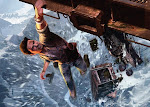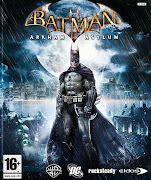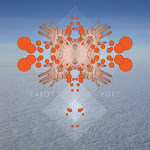
With this post I would like to go through my favorite speakers and briefly the points they made which I thought were most avid and important towards games design. I will go into further detail about these processes and approaches/theories in future posts.
http://vimeo.com/1953335 from Matt Brown on Vimeo.
Chris Delay http://www.introversion.co.uk/
Chris Delay is a lead games designer/artist for the company “Introversion” who made titles “Darwinia”, “Uplink” and “Defcon” which are unique stylized art house games within a small development team and budget. He talks about his design and technological method towards game technology called “Procedural Generation” to save money and time when you can’t afford an art team. In a nutshell, basically he defined simple rules and perimeters within his own game system/software which enables the software to automatically create game environments (an urban city landscape) via an organic process by following these rules for his new game “Subversion”. It's an innovative approach as many development studios build their game/design approach around their new technology rather use the technology to build the game. Also interesting he claims that he used these rules to game systems to quickly create prototypes for experimenting and I wonder if the final game will use these rules in regards of gameplay. This demonstrates how pre-planning basic core rules on paper goes a long way but seeing it in action within a game system where you see if ideals work.
time when you can’t afford an art team. In a nutshell, basically he defined simple rules and perimeters within his own game system/software which enables the software to automatically create game environments (an urban city landscape) via an organic process by following these rules for his new game “Subversion”. It's an innovative approach as many development studios build their game/design approach around their new technology rather use the technology to build the game. Also interesting he claims that he used these rules to game systems to quickly create prototypes for experimenting and I wonder if the final game will use these rules in regards of gameplay. This demonstrates how pre-planning basic core rules on paper goes a long way but seeing it in action within a game system where you see if ideals work.
Tom Armitage http://infovore.org/
Tom Armitage I actually don't know what he does, but by going by his talk, he knows his stuff. He has an interesting theory where he believes that all multimedia devices (computer games included of course) are multiplayer interlinked with other devices into a bonding social network via software. It is true to a certain extent which is also referred as “Supercontext” theory http://www.futurehi.net/archives/000172.html. He goes on saying how we are a part of social network and these exist to connect a person to shared objects that connects us together, for example, people connect to the site “Flickr” through photos, “Youtube” through videos, etc. He goes on to relate this topic to how Xbox Live only works as tool/service when millions of people connected to allow online gaming to coexist and function as social  network. “Even single player games are played in a multiplayer context of persistent profiles” he quotes from Raph Koster ( Raph Koster wrote “Theory of fun” which is a great game design book) referring to games like “Fable 2” or “Geometry Wars 2”, (primary functional and designed as) single player games which use features of connectivity of other players without being online/multiplayer which he calls “Sync activity with shared context”. In other words, single player games aren't single player any more as they all share data/info with other players expanding the experience as part of a social network. He believes that all games will be like this which I think would make for interesting debate as I argue that certain games wouldn't benefit/work within such design ideal like say “survival horror games”.
network. “Even single player games are played in a multiplayer context of persistent profiles” he quotes from Raph Koster ( Raph Koster wrote “Theory of fun” which is a great game design book) referring to games like “Fable 2” or “Geometry Wars 2”, (primary functional and designed as) single player games which use features of connectivity of other players without being online/multiplayer which he calls “Sync activity with shared context”. In other words, single player games aren't single player any more as they all share data/info with other players expanding the experience as part of a social network. He believes that all games will be like this which I think would make for interesting debate as I argue that certain games wouldn't benefit/work within such design ideal like say “survival horror games”.
Kars Alfrink http://leapfrog.nl/
Kars Alfrink is freelance interaction designer from Utrecht, the Netherlands who spoke about designing fun and what fun is? To explain his theory of fun he refers to the film “Dogtown and Z-Boys” which is about the beginning of skateboarding (before it become a s port) where they discover the use of empty swimming pools to create momentum to perform tricks. He used this example to demonstrate how people create fun by changing a tool's rigid useful normal form/function to invent their own useless function becoming playful. These tools allow users to create and communicate their own meaning/purpose, designers can't create meaning via tools, which I don't fully agree with to be honest. He backs up his point by quoting from Mitchel Resnick - Turtles, Termites and Traffic Jams (This is his book he wrote) “What’s needed are microworld construction kits, so that you can create your own microworlds, focusing on the domains you find most interesting” I agree with this statement which reflects the design approach of “Little Big Planet” but I believe tools have to be created with some form of connection/meaning towards the user to allow their interpreta
port) where they discover the use of empty swimming pools to create momentum to perform tricks. He used this example to demonstrate how people create fun by changing a tool's rigid useful normal form/function to invent their own useless function becoming playful. These tools allow users to create and communicate their own meaning/purpose, designers can't create meaning via tools, which I don't fully agree with to be honest. He backs up his point by quoting from Mitchel Resnick - Turtles, Termites and Traffic Jams (This is his book he wrote) “What’s needed are microworld construction kits, so that you can create your own microworlds, focusing on the domains you find most interesting” I agree with this statement which reflects the design approach of “Little Big Planet” but I believe tools have to be created with some form of connection/meaning towards the user to allow their interpreta tion to take place, this links to Matthew Irvine Brown's talk. In other words, the tools have to inspire the user to be playful with. For an example, “Little Big Planet” is nothing new in regards of its function of a level editor but it's the accessible in-game use of UI and charming cute visuals makes the game feel fresh and inspiring.
tion to take place, this links to Matthew Irvine Brown's talk. In other words, the tools have to inspire the user to be playful with. For an example, “Little Big Planet” is nothing new in regards of its function of a level editor but it's the accessible in-game use of UI and charming cute visuals makes the game feel fresh and inspiring.
Eric Zimmerman http://www.gamelab.com/
The last and my favorite talk (most inspiring as he was so passionate) was by “Eric Zimmerman” who is designer at “Gamelab” who made “Diner Dash” (which is hugely popular flash game) and wrote the book “Rules of Play” He spoke about three components of ‘game literacy’: System Play and Design, which are needed for any game to exist. “System” is series of perimeters/commands that a game world must follow to exist just like Chris  Delay with his approach with “Procedural Generation”. “Play” is tools of interactivity within the game just like Kars Alfrink and Matthew Irvine Brown theory to design. Then there’s “Design” which is deciding on the rules/purpose of the game. So in other words “Play” needs “Design” and “Design” needs a “system” and “system” needs “play” as Design = Rules/purpose, Play = Tools/mechanics, System = technology/perimeters.
Delay with his approach with “Procedural Generation”. “Play” is tools of interactivity within the game just like Kars Alfrink and Matthew Irvine Brown theory to design. Then there’s “Design” which is deciding on the rules/purpose of the game. So in other words “Play” needs “Design” and “Design” needs a “system” and “system” needs “play” as Design = Rules/purpose, Play = Tools/mechanics, System = technology/perimeters.
To conclude, this event was very insightful and I really enjoyed it, learning a lot. I will definitely come again next year, you should too! Anyways thanks for reading!







